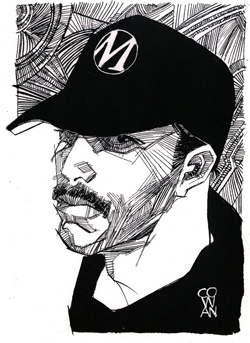
In 1992, Milestone Comics hit the shelves. It was a blend of characters of unparalleled diversity that had not been achieved before or since by any publisher. Although, in some circles of fandom, these comics were labeled as “black comic books,” nothing could be further from the truth. The stories, titles, and characters at Milestone included an entire spectrum of ethnicities (as well as gays, lesbians, and trans-genders). It was a progressive step within the industry to say the least. The company’s founder, Denys Cowan, could have easily rested on his laurels. Humbly exiting the public eye after undertaking a project of this caliber would have been more than understandable, even justifiable. But Denys’s story didn’t end there. Nor is that where it began. Below you will get a look inside the mind of a comic industry veteran and pioneer. His trail-blazing didn’t stop with Milestone or comics themselves. Over the past twenty years, Denys has worn many hats, including producer, director, story-boarder, corporate executive (twice over), and comic artist. In this interview, you’ll read what led Denys to take on these various titles, and what the future holds for him. It’s a tremendous journey that has spanned many moons, and it all starts here.
Comic Attack: Can you describe the timeline between leaving Milestone Comics in 1996 and becoming Senior Vice President of animation at BET?
Denys Cowan: Wow. That’s quite a story. I started Milestone. I brought in Dwayne [McDuffie], Derick [Dingle], and Micheal Davis. Actually Micheal Davis was there at the beginning. We did that from 1991 till about ’95 or ’96. We started in ’91 and published in ’92. I left the physical place in ’96 and came to LA and got a job working at Motown of all places. I was the VP of animation for Motown. I did that for about a year. Then they went through management changes, and I went to Dreamworks. I did storyboards and designs for different projects. They were doing Prince of Egypt at the time. They were doing a lot of direct to video sequels or prequels. Joseph: King of Dreams was one of them. Five million dollars later, and I got that done (laughs). I worked for Nickelodeon..bounced around…
CA: How was your time with Nickelodeon?
DC: It was good. Basically I did storyboards for them. I storyboarded this take off on Jimi Hendrix. It was a Jimi Hendrix type character as the pied piper. Crazy stuff. I don’t even know if that movie came out. I never saw it, and I don’t know anything about it. I just know I did these things and they paid me and it was all good…After bouncing around like that I ended up at Warner Bros. because Warner Bros. picked up Static Shock in 2000. So, I was the director on that for two years and then I was a producer for two years. I went on to produce the Boondocks. Then from there I went on to be the Senior VP at BET for about three years. That ended in ’09.

DC: Surviving is the biggest thing, but I’m particularly proud of a couple of things we did. We did a couple of series that never got on the air. BET was a wonderful place, but they didn’t have the strongest animation support. I don’t think they understood what they really wanted to do with it once they had it. To really make an investment, theres a lot of money involved. It’s a serious commitment. I don’t know if they were ready for all that, but nevertheless, we did some series’ for BET. They weren’t ready to put them on, but we did a bunch of shorts that they did air. One of them was called Read a Book. Which was very controversial, and it shook everybody up. It was a firestorm of controversy. I loved every second of it. Basically, the video is this animated character doing little John. Back then Little John was kind of hot. [The video] was telling kids “read a book, read a book, read a motherfucking book! Not a postcard. Not a magazine, but a book nigga! A fucking book!” Dude, we put that on the air..we caught hell (laughs)! It was great. Because what it kind of arrests you. It shakes you up and makes you go, “whoah, what are they talking about here?” It ended up in the New York Times and all that stuff. CNN did a whole thing. I’m watching TV on a Saturday with my son, and I look up and there’s a whole thing on me and “Read a Book,” and how Denys Cowen wont answer any of our questions at CNN. It was a surreal experience to have my son turn and look at me and say, “Dad, you’re in a lot of trouble.”
CA: Had CNN actually reached out to you?
DC: Yes. They actually had reached out to me. They requested an interview. The powers at BET at the time were like, “Nah!” They ended up interviewing the director and the creator of the song. They ended up defending it. I’ve very proud of that. I’m proud of several Obama short that we did. Obama dream sequences during the inauguration. We did some things. There was another short call Bid ’em In (pictured below). Which basically was a short about slavery auctions. Just different things that uses animation to tell a different kind of story that your not used to.
CA: And these were bumpers?
DC: Yeah. BET would air them throughout the day. They would show them at the end of 106 and Park. The video ran on 106 and Park‘s Top 100 and Top 10. It was actually in rotation. So, you’d get TI and Riahnna and then you get Read a Book. It got a lot of airplay. Then it ends up on Youtube with near three million hits. That’s when things started hitting the fan.
CA: What led to you leaving BET?
DC: Just a change of Management. My contract was up. Reggie was gone, and all the people that hired me were gone. They had a different direction that they wanted to take with the company. As often happens when new bosses come in. So, that was it for me.

CA: Is there still an animation department at BET?
DC: They don’t have any animation. They just put on whatever programming can get them the most advertising dollars. That’s it. That’s always been their job. Their job is not to do good animation or to do good shows. They’re job is to make as much money for the investors as they possibly can. They’re very good at doing that.
CA: OK, let’s switch gears to comics. Captain America/Black panther: Flags of our Fathers was a critical success, and the fans definitely loved it. How did you feel about the mini-series’ success? Did Marvel give you any feedback?
DC: Wow. Those are really interesting questions. How did I feel about it? The only way I tracked it was following it online…looking at Reggie’s excellent website, hudlinentertainment.com, were he has a Black Panther forum and all kinds of stuff. It’s a great site. He always talks about everything he does. He talked about Black Panther: Flags of our Fathers a lot. You’ll see, if you look at the threads, you’ll see all the commentary on all the issues that a lot of die hard fans had. They seemed to really dig it. So, I followed that, and I looked on the comic book websites to kind of see what people were thinking. As far as any feedback from Marvel, the editor seemed to be really happy with it, but I didn’t hear anything else from Marvel after that on how it went or how it sold. Nothing. They just put it out.
CA: They didn’t have anything bad to say?
DC: They had nothing bad to say.
CA: Maybe that’s their form of a compliment.
DC: (laughs)..that’s good. Well, I know the editor liked it. He really liked it. Other than that, the only feedback I ever saw or ever got was online or friends of mine would call. Marvel doesn’t call and say this is a great idea unless your Brian Hitch or somebody. My personal editor was Axel Aronzo. He liked it a lot. He was really into it. The assistant editor really liked it. Aside from anyone else at Marvel, I haven’t heard anything from anybody. If they didn’t like it, it wouldn’t have been published.
CA: The internet is a rough place to look for feedback.
DC: It’s a mile wide and an inch deep. So, you’re gonna get a lot of the same thing.
CA: It’s also the age of anonymous comments and trolls. There’s a lot of negative feedback, but you didn’t get so much of this with Flags of our Fathers.
DC: Yeah. I know. The hate. Reggie gets a lot of hate. It seems like a lot of comments, but most people don’t take the time to do something like that. So, if you do it, it’s a real thing. They took some shots at Reggie, and for some reason on this thing, they would say, “I wasn’t so fond of Denys Cowen ‘s stuff, but this series is really great.” There was a lot of that, and that was good to see. It’s always good to turn people around.
CA: That’s almost like a back-handed compliment isn’t it?
DC: Yeah, it really is, but you know, what ever. I was speaking to the publisher of Top Cow. We were talking yesterday about the internet and people posting things and what it meant and how serious you should take it and how seriously you shouldn’t take it. We’re here to sell comic books and to entertain people. If you liked it before..if you don’t like it now…you didn’t like me before, but you like me now…whatever it is..it’s all good, as long as you’re engaged.

CA: You had an apprenticeship with Rich Buckler. For those who aren’t familiar with Rich’s work, can you briefly describe it, and tell me how you came to work with him?
DC: Rich Buckler is an artist from Detroit. All through the ’70’s and ’80’s, he did a lot of comics…I think he did some in the ’90’s..Rich did the Black Panther. He did a lot of stuff for Marvel. He was kind of like the Frank Miller of his day in terms of story-telling and the stuff he brought to comics in a cinematic sense for a brief time. He also created a character called Deathlok. That’s how I got to know his work. While I was in High School, a friend of mine was actually working with him, and he asked if I wanted to meet him. He was going down there that afternoon, and he asked if I wanted to meet Rich Buckler, and I was like, Yeah, cause all I wanted to do was comic books. So, I was fourteen, and I ended up working for him. I was a freshman in high school. I worked for Rich. Then I worked for Neal Adams. So, I would go back and forth between the two. It was pretty cool. So, I worked for Continuity as a teenager, and I worked for Rich Buckler as a teenager.
CA: How would you describe Rich Buckler and your relationship with him?
DC: Rich was doing a lot of comic books at the time. He was very patient with me. He didn’t pay me a whole lot of money, but he taught me a lot about comics. He taught me a lot about drawing. What to do..what to look for..how to use reference..how not to use it. He introduced me to about everyone in the industry. It was quite an experience. In retrospect, looking at it from my age now, he was very patient with me. I don’t know if I could do that with somebody.
CA: How did the job at Continuity Comics come about?
DC: I went to the High School of Art and Design in New York, and they had an internship program. I had already know some of these people from earlier in my high school years. So, there was an opportunity to work at Continuity Comics, and I did it as a paid intern. They asked for me, and I got the internship. I worked there from the last part of the school year through the summer until the next year.
CA: So, did you get to meet Neal?
DC: Dude, I met everybody. When I was at Continuity, I was sixteen years old, and there’s Wally Wood, Larry Hamma, Ralph Reece, all of em. Everyone came through. I literally hung out with all of them. Larry Hamma wanted to kill me because I was a dumb punk kid. I don’t blame him. Wally Wood cursed me out because I messed up a stat of his. I remember him just cursing me out. I was like, I’m finally meeting Wally Wood, and he hates me. I worked more hands on with Rich than I did Neil, but Neil had a whole studio to run. I was lucky to be up there anyway.
CA: You’re talking about Wally Wood cursing you out. Did you have any interaction with Neal Adams (pictured above) that was weird or memorable to you?
DC: Neal operates in the Neal world and there’s a lot of people around…OK, you know, like when I was up there, I would work behind Neil. So, I would always be seeing Neal’s back, but I would be able to stand up and look and see what he was doing. Then he would turn around, look and me and go back to work. I would sling back to my seat, and we did this every day. When I was there sitting in back of Neal, watching him draw, I remember distinctly Frank Miller coming up for the first time and showing Neal his portfolio. I remember Frank Miller coming up and showing his samples before Daredevil. I was there when Neal said to Bill Sienkiewicz, go see Jim Shooter, and he went and saw Jim Shooter and he got Moon Knight that day. Everyone passed through Neal Adams studio. We all did.
CA: In retrospect, being exposed to these types of environments, how did it affect your work ethic, your art, and your style?
DC: It effected my work ethic in that, early on, I knew what it took to do a comic book. I knew what it took to work. I knew what it took to draw. I was inside at an age that most people were reading them. I was inside doing it. It was just part of my life. I knew how lucky I was, but I didn’t realize how lucky I was. In that, I was lucky because I was meeting all of my heroes, and I was hanging out with them. But it wasn’t until later I realized how absolutely fortunate I was because that era doesn’t exist anymore. Where you have large studios and apprentices. You know, people running back and forth like that. It was a different time. So, I appreciated it in one sense. Then in another sense, I didn’t at all.
CA: Being an African American artist, have you ever been exposed to any racial prejudices within the comic community, and over the years, has it changed?
DC: You really got the questions.. Early on, when I was first getting into comics, you gotta realize..1975..’76..’77..’78 ..whenever that was. Yeah, there was racism. I got it from editors. I got it from people. I got, “we already got black people working here.” I got, “you and Ron Wilson and Art Bell can’t be hanging around together in the halls because they’re gonna think that ya’ll are up to something here at Marvel.” I got all that. I got put on every black character. In a sense, that was OK. I didn’t mind doing black characters because I’m black. Who else was going to do them and love them like I love them. To this day I prefer to work on [black characters]. It would be great to do Captain America all the time and get Captain America money, but give me Power Man..give me Black Panther and I’d be a very happy man. I can’t say enough about my people and what we do. Back then there was shit to deal with, but it certainly wasn’t like people were actively, to my knowledge, being racist against me. Comic books were run by a bunch of white people. It still is run by a bunch of white people. Shit. Nothing changed. How is it now (pause) ..I don’t know. You tell me. How is it? Are there creators of color? Yeah. I know some of them. I’ve seen them. I know some of these cats. Where are the characters? Right now it’s like a swing back. Let’s swing back to the ’60’s…when things where good. I don’t know if they were that good for all of us. Also, I don’t know if, among the creators today, there is the same amount of consciousness or pride or awareness that we had back in the early ’90’s when we created Milestone and we did all that stuff. It was a different time. Different cats. Different artists. I know what I see in print [now]. I get all the DC comics, and I see kinda what’s going on..it is what i is.
CA: DC comics is doing a big swing back to the Silver age, and you kind of touched on that.
DC: Yeah, that’s right. When things were good. When the world was white and things were good. And I’m like, what is that. I’m all about going forward. I don’t like going backwards.
CA: Why do you think these creative decisions have been made to reinstate Silver Age/white characters while reducing the role of ethnic characters in DC’s team and solo books?
DC: I feel that, although people may not be consciously evil or consciously doing something that they know is kind of messed up. They’ll do it unconsciously, but the effects are the same. Milestone was created because of my son. I literally didn’t wanna have a world where there was only Superman, Batman, Wonder Woman, and Captain America for him to look at..that is, if he ever wanted to see comic books. Those are powerful representations of the human ideal. Your like, “oh man, I wanna be like Superman” if you’re a little kid. But if he’s white, and it’s all good, but your not..you’re a little black kid..that’s not you, and they’re not even trying to pretend that’s you. So, that’s where I came in. Now, what are people doing now about that..now that everything’s going back? I don’t know.
CA: Do you feel that the Milestone imprint had any impact on society or do you feel it was overlooked?
DC: Did it change society? I don’t know. I figured, even at the time, if it made you pause for a second and think about things you haven’t thought about before in this context then we’ve done our job.

CA: Out of Milestone, no one has held more of a cultural presence like Static/Statix Shock.
DC: Right. Because he got on TV.
CA: Yeah, and I remember he had a toy in one of the kids’ meals.
DC: Burger King. It was a Burger King toy.
CA: That’s a pretty big deal. To be involved in the creation of a character that got his own kids’ meal toy.
DC: (laughs/ sarcasm) That’s when you have finally made it. When you are a Burger King Kids Meal piece of plastic. That is the epitome [of success]. (end sarcasm) I still have it. I still have the little Static Shock toy from Burger King. We made attempts to do little deals all the time. To market it correctly. I don’t know if they ever really did. I don’t know if they ever figured out quite how to market Static Shock. For what it was, it was quite successful. There’s probably stuff you don’t even know about. There was Halloween costumes. There was a couple of things that we done with Static, but it was never really exploited the way it could have been. Again, you have to remember, if it’s not Batman or Superman..even at that time, Warner Brothers wasn’t gonna spend a whole lot of time trying to market something. Their whole thing was exploiting stuff that was already popular. So, if you have Batman and Superman, you’re not gonna spend a whole lot of time making Static Shock work. Then later on you have Harry Potter, which was already a success before it got to Warner Brothers. Why would [Warner Brothers] try to focus on getting a couple of dollars out of this little black character when you have Harry Potter? Harry Potter makes billions and you don’t have to do anything. You just have to sit and wait for the phone to ring… and it does. That’s OK, though. At least people know about who [Statix Shock] is, and what we did.
CA: How much did the Static character change from his first appearance in the comic book to the cartoon, and so on?
DC: Not much. That character is pretty much the same character as he appeared. That was one of the reasons why it was so successful. The most successful comic to screen characters are the one’s that are very true to their original source material. The one’s that aren’t tend to fail. The one’s that are tend to be successful films even if they’re not money makers.
(The last portion of the interview was ommited upon request of Denys because it contains information about an unnamed graphic novel that has yet to be announced by its publisher. Stay tuned to ComicAttack.net for further updates on this project. Now for our closing words….)
CA: Alight Denys, I definitely appreciate the time. It was a pleasure talking to you.
DC: Thank you for the interview. This was a lot of fun. You’re well informed, and your a great guy. I even got to talk about politics and get all mad [we both laugh and say our goodbyes on a very positive note].
Now for a look at some exclusive layouts and pencils from Denys:
Visit this link to check out previous Artist of the Month columns!
Editor’s Note: ComicAttack.net has been officially nominated for an Eagle Award! Please click here to vote for us in the “Favorite Comic Book Website” category (question #27). Thank you for your continued support!
Josh Jones
josh@comicattack.net

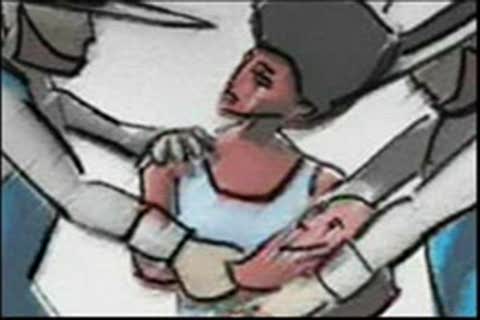
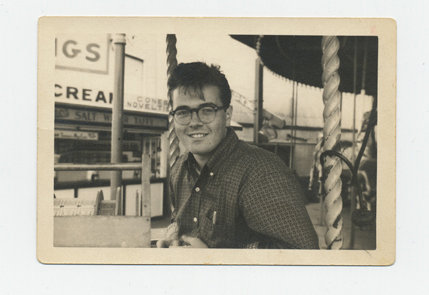






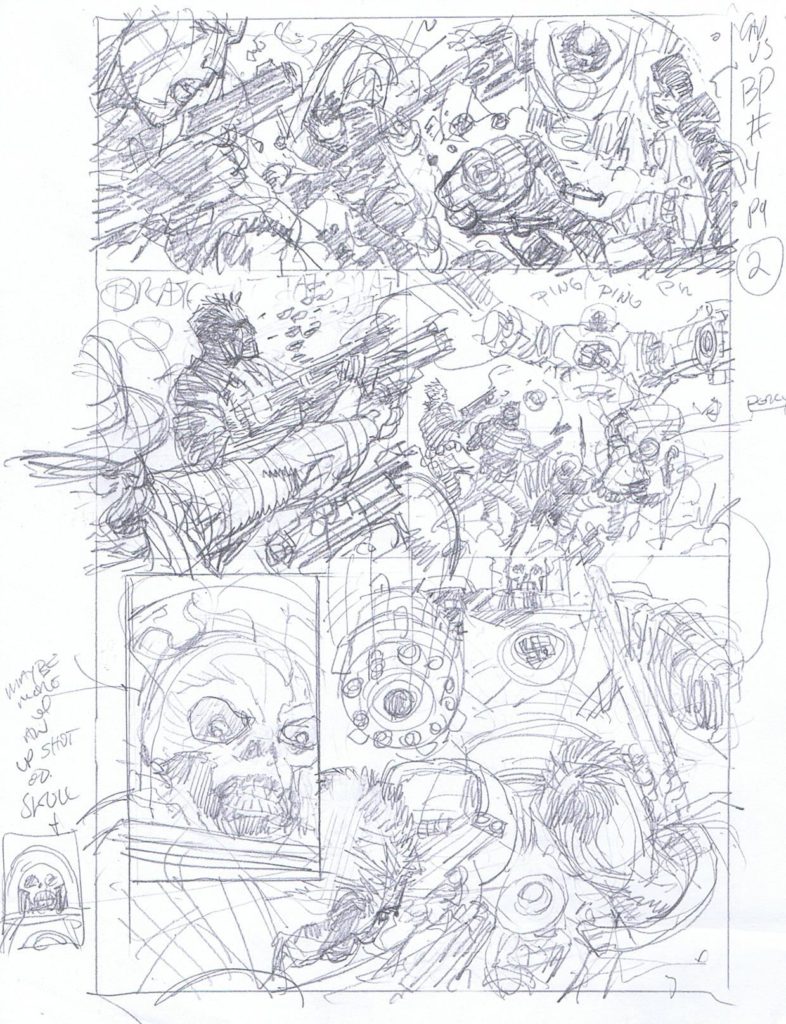
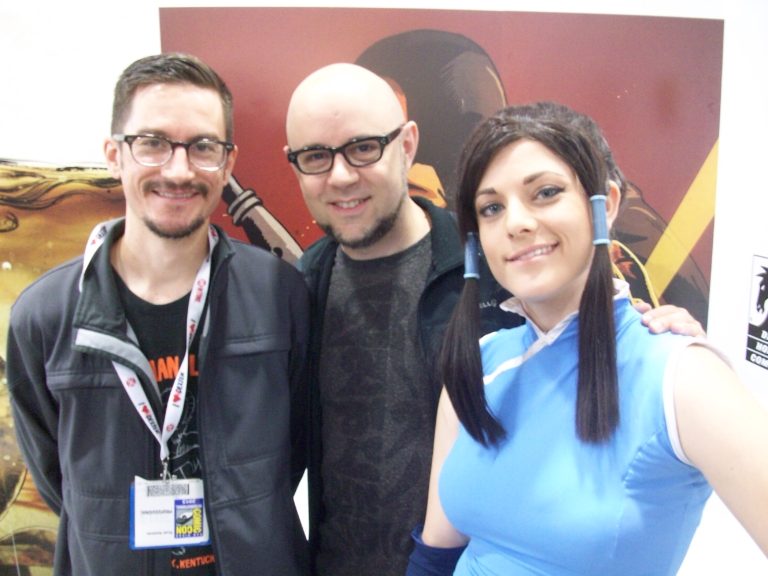
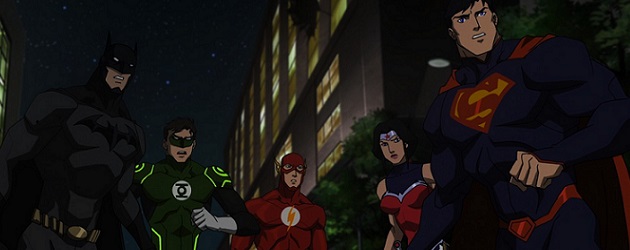
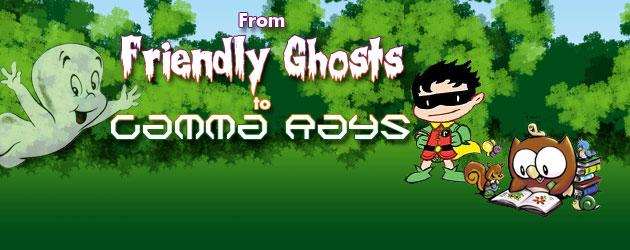
Pingback: DC Reviews: Milestone Forever #1
Nice interview, really in-depth. I do agree with most of what he said, but I feel like superheroes transcend race/color barriers. I think Blade rocks, and have never thought I wanted to be a white character because I’m white. I don’t really like to put labels on superheroes, or people for that matter.
I’ve liked Cowan’s work for a while but my favorite is his work on Hardware while with Milestone and then on Milestone Forever #1. That layout is one of the best scenes which was in the first Hardware issue as well and he and Dwayne made that one perfect sequence!
Billy, I think most of it comes from the fact that growing up any minority there were very few characters that represented us. Most of the super heroes and villains that were in the spotlight were white males & females and most of the time when a black, asian, or any non white person was introduced it was usually a horrible stereotype that was basically a slap in the face. The Black Panther was the only character that showed something different when it came to a black character back then and that was a monumental step when you consider the year he was introduced in and that he first appeared in the FF title and beat all four of them.
I definitely agree about the DC issue and I’m sorry but they SUCK when it comes to handling ethnic characters. They pussy foot around so many things or they just mismanage the characters they do have. The fiasco that was Great Ten ( A Chinese super hero team) is just one of the recent examples along with several other issues. DC now has use of the Milestone Universe which has more diversity in it’s short time than DC has had in it’s 70+ yr history but it’s a shame they had to make that deal to kind of balance things out instead of developing their own characters.
Anyway let me stop before I go on and on.
All in all, great interview Josh and Denys!
Denys is an awesome guy and a great artist. He’s a good friend and a semi-regular customer at our store. We’ve sold some of his original art, too. Every time I see him there is a story, and I can’t wait for his new projects. Wait till you see what he’s got coming out next.
@Speech- Yeah, I see what you mean. Most of the characters were bad stereotypes instead of well thought out characters. Hopefully that will change with the emergence of newer talent in the field.
It’s changing with the new and diverse talent and also because of the times. Many of those guys realized that most of the depictions were just ignorant and insulting. It’s when a character is sidelined because some writers have difficulty writing a non white character is what bugs me and just screams “LAZY” if you ask me.
Marvel definitely bitch slaps DC when it comes to issues of race.
Now that I think about it, case in point this week- Ultimate Comics Avengers vs. New Ultimates #2. That series stars predominantly black characters, and it KICKS ASS!! Seriously: Blade, Nick Fury, War Machine, who are backed up by Hawkeye and Punisher. Who do they fight? This ball buster of a new Hulk, who’s a mo fo I would not mess with. Holy hell, this issue was awesome, and every single character in that book is interesting…and this is only the Ultimate line. Meanwhile, in the 616 Universe, Luke Cage is leading an Avengers team and the T-Bolts, Storm is leading an X-team again (FINALLY!), and T’Challa has replaced Daredevil in NYC.
…and in DC? …um…there’s the new Aqualad and…uh…Static…who isn’t even in a title right now.
Yeah.
Anyway, Denys is an awesome guy, and I love it when he comes into Collector’s Paradise to chat for a bit. I highly recommend checking out his work.
Pingback: The Underground: Black Comic Characters You Don’t Know!
Pingback: Ye Olde School Café: The Nine Rings of Wu-Tang TPB – ComicAttack.net